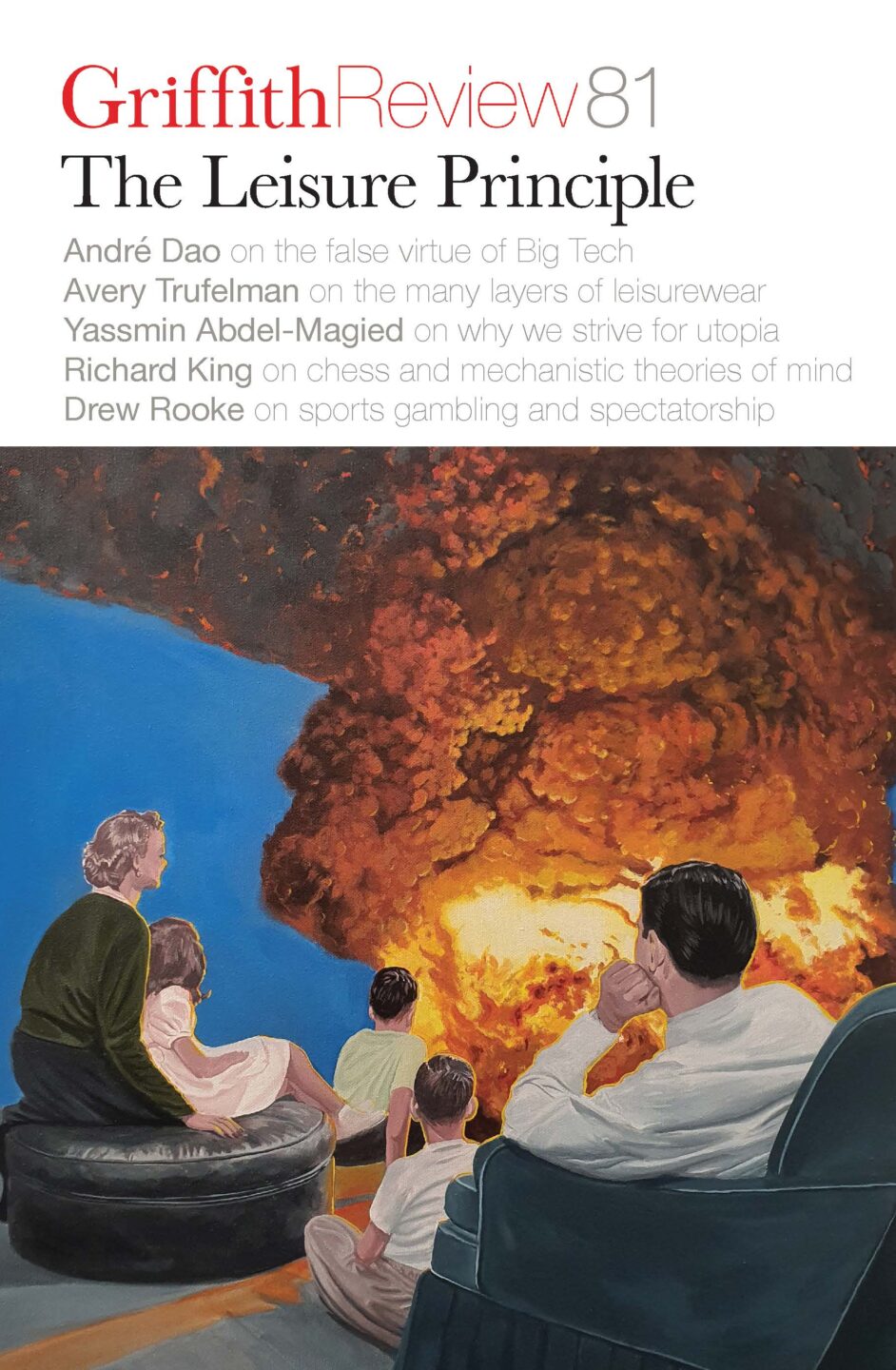Featured in

- Published 20230801
- ISBN: 978-1-922212-86-3
- Extent: 200pp
- Paperback (234 x 153mm), eBook

Already a subscriber? Sign in here
If you are an educator or student wishing to access content for study purposes please contact us at griffithreview@griffith.edu.au
Share article
About the author

Willo Drummond
Willo Drummond’s debut collection, Moon Wrasse, is published by Puncher & Wattmann. She is a researcher, sessional lecturer and supervisor in creative writing who...
More from this edition

Salted
FictionWe are absorbed in our work until we are not. Mostly we take breaks together, sitting outside in the sunshine waiting for our thoughts to settle, waiting for our lives to begin. Gus and I have both applied for the same scholarship. We’ll find out at the end of the month. Eve is organising a group show and wanted my latest painting as the centrepiece, but I won’t finish it in time, so I drop out. ‘I’ve got something ready,’ says Gus. Easy enough to find someone to fill my place.

Oh, the shame of it
Non-fictionModern leisure emerged in the West in the early 1700s when French and English cities developed new forms of society built around urban amenities – parks, cafés, fairs and shopping districts – servicing an expanding class of people with discretionary time and income. Public museums as storehouses of national culture appeared a little later in the nineteenth century where they contributed to the development of so-called ‘rational recreation’, a species of serious leisure intended to ‘civilise the masses’.

In the fullness of time
Non-fictionOur devices and data are more than extensions of our physical bodies. The so-called ‘human-centric’ approach to designing wearable and carriable devices means that they disrupt traditional divisions between work and leisure, production and consumption. It’s difficult not to feel the incursion of work-logics into leisure times and spaces as normal. Stretched for time, couples, families and friendship groups are starting to organise themselves using tools like Slack, Jira, Trello and Asana – that is, in the same way as workplaces.